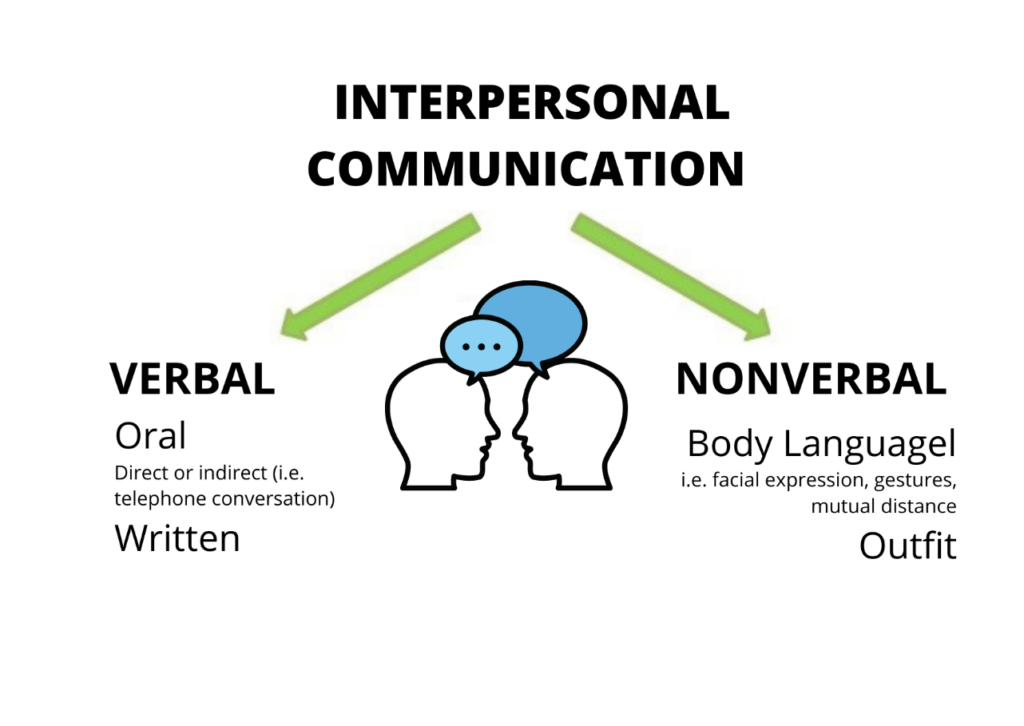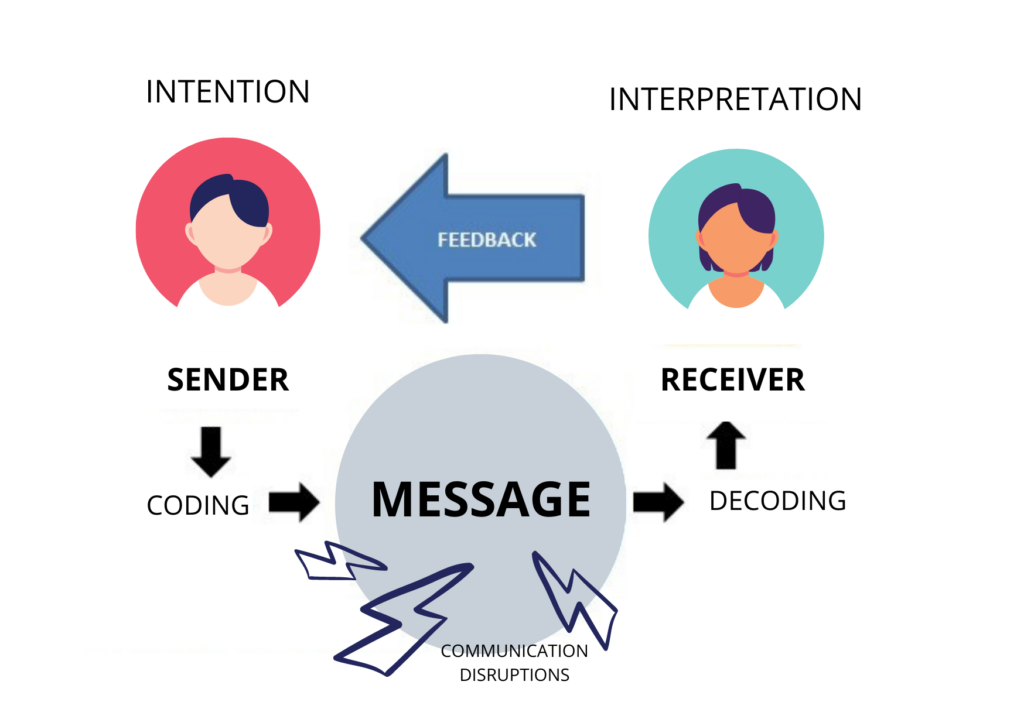10.1 Introduction
The ability to communicate is a basic life skill. Effective communication allows us to satisfy basic life needs and maintain relationships with people as well as gain respect and trust of others. Ineffective communication will make us feel misunderstood and disconnected. This applies to any kind of human relationship and a peer relationship is no different. To facilitate an effective intervention- and building a positive and healthy relationship between the peers- it is important for the peer supporter to acquire and develop practical skills in this area.
10.2 Learning objectives
In this unit the learners will
- Increase their knowledge about interpersonal communication
- Learn the principles of active listening and acquire skills in this area
- Understand communication barriers and their impact on communication
- Get more insight into the challenges of communicating with homeless people
- Familiarize themselves with various methods of developing communication skills, e.g. motivating dialogue, solution-focused therapy
10.3 What is communication?
The term «communication» (Latin: communicatio) means connection, exchange, conversation. In relationships between people (interpersonal communication), words, gestures, and symbols are used as a carrier of information/message for the purpose of communication.
Types of communication:
– Verbal (i.e. our speech, the vocabulary we use)
It is often difficult to communicate with persons experiencing homelessness. They often speak quietly and indistinctly. Other times they are excessively loud and aggressive. The way these people communicate is associated with a constant sense of danger and/or stress under which they live.
– Non-verbal (e.g. our body language)
It is normally difficult to control non-verbal signals. Even if the person isn’t uttering words, his/her facial expressions, frowns, crossed legs or arms signal emotions, feelings or attitudes. Oftentimes body language is more believable than words. Non-verbal communication also applies to the way we dress and shape our image.

Homeless people are often characterized by low self-esteem. Their body posture expresses insecurity, lack of basic life skills. Always remember that such persons have difficult past behind them, and the current situation often makes them feel ashamed.
What is effective communication?
We use to think that speaking is enough to be understood. This belief is often wrong. Each of us is different. We have different life experiences, education, experience different emotions, we have our own views and beliefs. We are different in terms of personality, character traits and cultural code.

In order to communicate effectively, the sender (the person who starts the communication) codes their intention using a pattern which, he/she believes, the recipient will decode. Coding must take into account the cognitive and intellectual abilities of the recipient, otherwise it will not be legible. An equally important factor in effective communication is ambient noise. These are all exterior disturbances to which the message is subject. The sender’s speech can be quick and slurred. The background noises may drown out the voice or the recipient may be hard of hearing. Likewise, darkness can make certain gestures or facial expressions go unnoticed.
Communication is effective when people understand each other. In feedback, the sender receives the correct interpretation of his intention from the recipient – the correct answer to the question asked or the recipient taking specific actions in response to the message.
Behaviors that favor effective communication
There are universal behaviors that favor and facilitate communication.
Active listening shows the interlocutor acceptance, respect, affection and warmth. It consists of focusing all attention on the interlocutor, maintaining eye contact, adopting an open body posture (no arms crossing), bending to the interlocutor, gently encouraging him to continue speaking. Active listening means taking responsibility for good information flow and for a partnership discussion.
Aspects important in a conversation: openness, readiness to understand the other party and offering any relevant help, asking questions that might be helpful.
Principles of active listening:
1. Trying to see the situation from the interlocutor’s point of view.
2. Showing genuine interest.
3. Allowing the interlocutor to express him/her, without interrupting.
4. Avoiding jumping to conclusions.
5. Checking the meaning of the information conveyed (paraphrasing).
6. Separating what was said from what one wants to hear.
7. Concentrating on the content of the conversation.
8. Using body language freely.
9. Being patient.
Techniques helpful in active listening:
Paraphrase: a repetition with our own words of what – in our understanding – the other person said. Common phrases used for clarification include: You said that…; If I understand correctly …
Clarification: a summary of the essential elements of the interlocutor’s utterance. It enables interlocutors to make sure that they have the same conclusions from the conversation. Common phrases used for clarification include: I understand that…; From what you say, I conclude that …
Reflection: describing in words the emotions, feelings we see in the words and behavior of the interlocutor. Common phrases used for clarification include: I can see that you are upset…; Your hands are shaking…
Constructive feedback is our individual, subjective response to someone’s behavior, appearance, etc. and communicated as such. It is a first-person message (I-message) – speaking of oneself – as opposed to You-message – speaking about the other. This type of message – being a non-judgmental one – does not cause conflicts and does not prompt the other person to withdraw. For people in situation of homelessness, who are sensitive to any judgments passed on them, such messages are much easier to accept. I-messages focus on facts, not on judgments, and express our feelings as distinctly ours without generalizing them and thus investing them with judgement. Constructive feedback functions between partners, while judgmental communication presupposes some hierarchy between the interlocutors.
Principles of constructive feedback:
- Informing, not criticizing.
- Taking into account our predispositions to provide proper feedback at a given moment (what is our mood, approach to a given person, the amount of time we have available for this conversation).
- Considering how the recipient will receive the feedback (what is your purpose for the message).
- Providing feedback as soon as possible after the event it relates to.
- Giving feedback a sandwich structure: 1st positive information / 2nd difficult information / 3rd positive information.
- Being specific — e.g. pointing out to what has been done right, what needs improvement, and proposing a plan for the future.
- Refraining from giving advice.
- Giving only as much information as the interlocutor is able to receive and process.
- Providing information only on what can be changed.
Assertiveness is a communication skill that relies on the friendly but firm way of communicating with people, respecting their and one’s own dignity and rights. Assertive communication is a message- factual, concrete, without the intention of hurting- relating to one’s own feelings [the so called I-message], but treating the other person with respect. An assertive person is not solely focused on his/her rights, but always supports the other and supports assertiveness in others. This is an important skill for a peer support agent, because people in a homeless situation – due to the difficult state of their affairs – usually adopt a manipulative, aggressive or submissive attitude.
The straightforward rule of assertiveness is:
I am OK – I have the right to be myself. You are OK – you have the right to be yourself.
People who are assertive:
- They talk about themselves well.
- They talk about their faults.
- They express their feelings.
- They ask for what they want or what is rightly theirs.
- They admit mistakes and apologize.
- They have no problems with saying “No”, refusing to do something.
- They accept compliments.
- They accept criticism and negative judgements.
- They are able to finalize difficult matters and conversations.
- They react in the face of difficulties experienced by others.
Communication barriers
Sometimes it is not possible for people to communicate effectively, which may be a result of the factors referred to as communication barriers.
It is a peer support agent’s responsibility to become aware and get rid of – to the extent possible – these barriers. However, the first thing to remember is that without an underlying partner or peer-to-peer attitude towards the interlocutor – whatever his/her condition – any efforts to eliminate the communication barriers will lack inner content.
It is also important to remember that in any conversation, however limited the available contact level (for example, with a person suffering a psychotic episode), the peer support agent has always recourse to some kind of distance from the situation which is also recognizable by a degree of humor. The least we can gain with it, is lessening the tension within him/herself, between him/her and the other person, and perhaps within the other person. One has to accept that sometimes nothing else can be achieved in the conversation. At least one can leave without feeling frustrated and without upsetting the conversation partner.
Faulty ways of addressing the other person
Inadequate language
The way the content is presented is important: choice of words, forming clear, short messages, speaking slowly enough to be well understood, refraining from passing too much information at one time. Additionally, cultural and social sensitive areas should be considered.
Taking someone’s problems lightly, distraction
Taking the interlocutor lightly is a mistake. Trying to calm someone down should apparently have a positive effect, but it often backfires. It’s hard to find a person who, having spoken of their difficult experiences and emotions, is calmed down by a message of «Take it easy» kind. The same applies to attempts at distracting the other by phrases like «Think about something positive», «Do you think only you have problems?».
Judgment, moralizing, labeling
Just calling someone «homeless» can have very negative effect. Generally, conveying – more or less explicitly – a notion of the other person’s “abnormality” or “inferiority“, won’t lead to any meaningful communication. Judgmental or moralizing attitude has no place in peer support agent’s role. The relationship and communication can be built only on the basis of a partner, peer-to-peer relation. It is not to say that difficult issues should be omitted but the exchange should be factual and always rooted in the basic respect for the other person. Judgmental attitude is often perceived as offensive and may arouse aggression.
Ordering, threatening
Making someone do something which we deem right, while ignoring that person’s judgement and feelings creates a barrier. Statements like: «Do it, no discussion», «Now you will do as I tell you» are humiliating and, in most cases, will be met with open or hidden resistance. Threatening, just like ordering, causes a sense of humiliation and arouses fear or/and aggression.
Giving advice, teaching
Being a good counsellor is not about delivering our solutions to someone’s problems. We are not experts on other people’s lives, and it is good to avoid statements like: «I think you should do that…» or «My advice is…».

Suggestions for contact with difficult interlocutors
When working with homeless people we encounter the so-called «difficult clients», who will require more effort to establish communication. People who struggle with various mental health crises, addiction or intellectual disability may harbor layers upon layers of distrust in them. It is advisable then to seek help from professionals in the field: psychiatrist, addiction therapist, etc. On the other hand, there are simple, humane ways of approaching the other human which applied consistently may, little by little, bring about some good change. Gestures, like offering a coffee, water, a sandwich, a cigarette, offering some practical help or just being quietly present besides, are not only attempts at communication – they are communication itself. They build trust and trust is both, what communication aims at and what constitutes a base for any meaningful communication.






